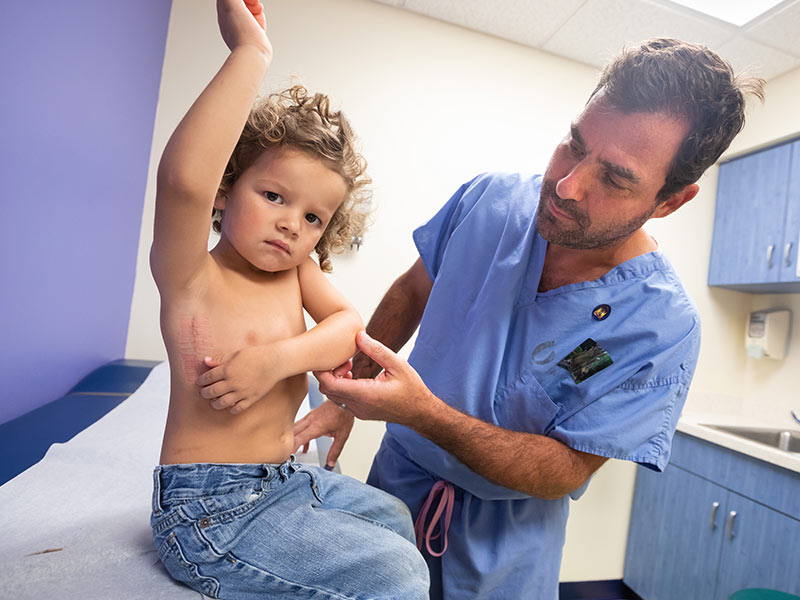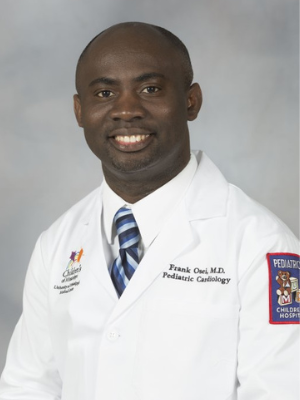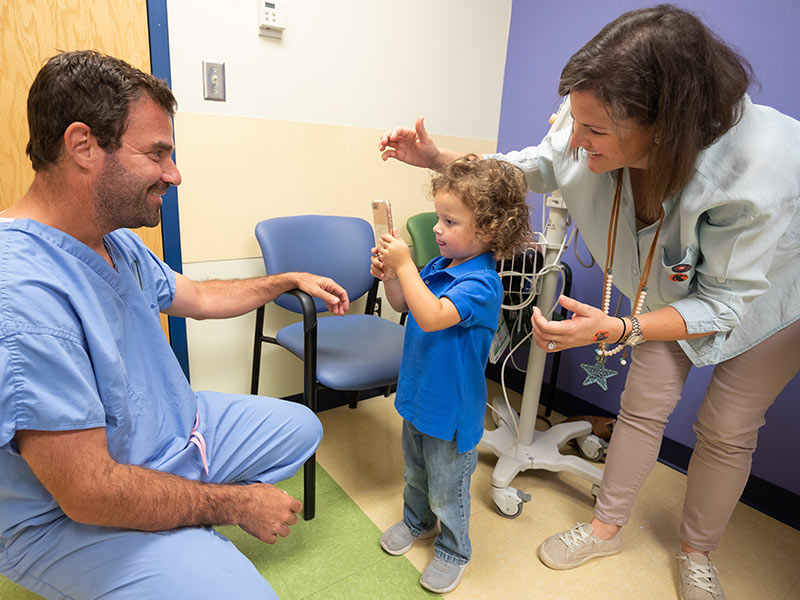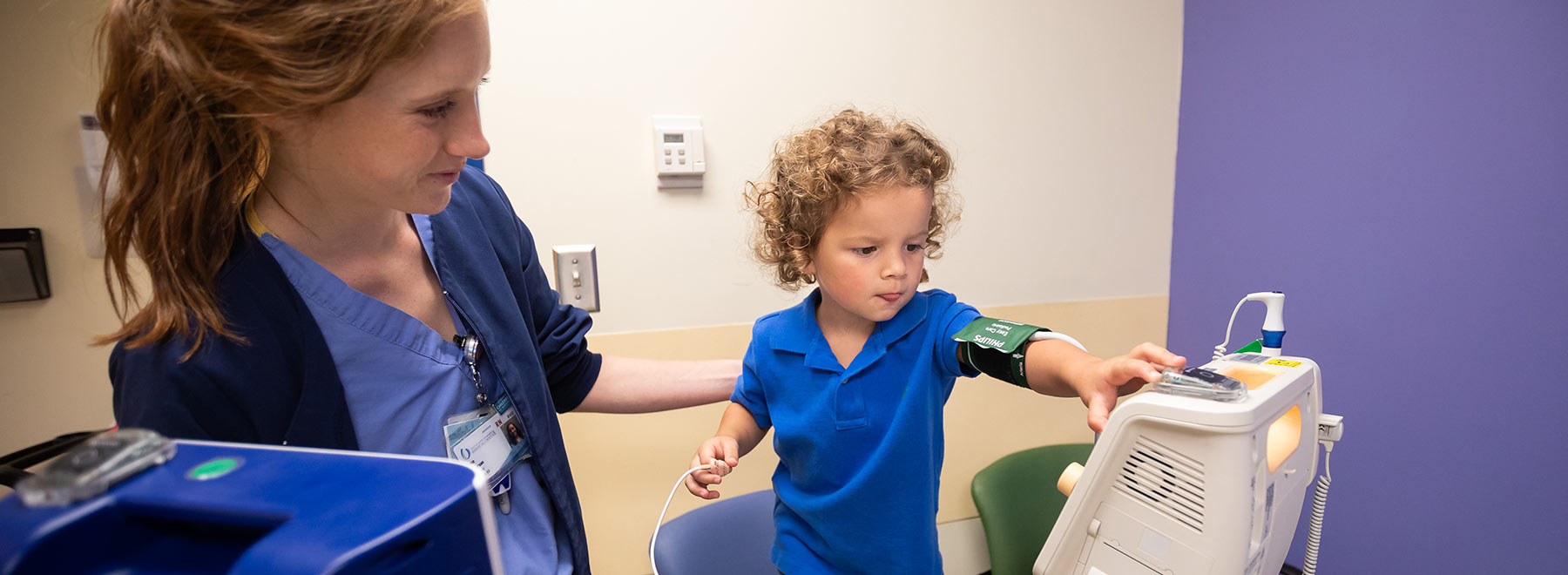Minimally invasive heart surgery helps 3-year-old to heal
Anna and Josh King thought something might be wrong with their son, Byars.
The 3-year-old was active, but after playing hard, the Aliceville, Alabama couple noticed Byars’ heartbeat. “It was beating so hard,” she said, “like it wanted to beat out of his chest.”
The Kings were right. After a referral to the Children’s of Mississippi specialty clinic in Tupelo, Byars was diagnosed as having an atrial septal defect. The hole between the upper two chambers of his growing heart required a surgical repair.
Thanks to minimally invasive surgical techniques, Byars’ stay at Batson Children’s Hospital at the University of Mississippi Medical Center in Jackson was less than five days, and his incision was small and under his right arm.
“He was discharged from the hospital on a Monday,” Anna King said, “and by Tuesday, Byars was running around, and I was trying to slow him down.”

The Kings’ journey began with small changes in their little boy’s habits that grew more noticeable.
Byars’ appetite started dwindling, and after he started playing tee-ball, they saw more symptoms, she said. “He would get so short of breath. We knew we needed to see a specialist.”
The curly-haired little boy saw UMMC pediatric cardiologist Dr. Frank Osei in Tupelo, less than two and a half hours from the King family’s home.

“Byars was referred to me after his primary care provider noticed a heart murmur,” said Osei. “The team, here at the Tupelo clinic and in Jackson at the Medical Center, reviewed Byars’ case at our weekly multidisciplinary conference and decided that a surgical repair would be beneficial.”
Osei said the collaboration between Batson Children’s Hospital and the Tupelo clinic allowed for Byars’ surgery to be scheduled less than a month from when he was diagnosed. The minimally invasive procedure had Byars in and out of the hospital within days, and the family had just one return trip to Jackson for Dr. Brian Kogon, chief of pediatric cardiothoracic surgery, to check Byars’ incision’s healing a week after surgery.
“Before the Tupelo clinic opened, the patients in the north Mississippi region had to travel long distances and in some cases, go out of state to have access to various pediatric subspecialty care,” said Osei. “Now they can get access to the needed specialty care closer to home and whenever needed, they can easily have access to excellent care at the state’s only children’s hospital.”
Technology allows UMMC cardiologists in Jackson to access results from tests performed at the Tupelo clinic and at Children’s of Mississippi specialty clinics around the state, and doctors there and in Jackson often hold Skype conferences to discuss patient care.

An atrial septal defect is an opening between the heart’s two upper chambers, the right atrium and left atrium.
In children with large atrial septal defect, the right side of the heart can become enlarged over time. If the hole is not closed, there will be risk to the blood vessels in the lungs because more blood than normal is being pumped there. Over time, usually many years, this may cause permanent damage to the lung blood vessels. Such patients also have the risk of developing arrhythmias or abnormal heart rhythm.
According to the U.S. Centers for Disease Control and Prevention, one out of every 770 babies is born with an atrial septal defect. About one out of every 100 babies is born with a congenital heart defect.
The defect is one of several that the Children’s Heart Center at Batson Children’s Hospital can repair using minimally invasive techniques, said Kogon.
“Since 2015, the Children’s Heart Center has offered minimally invasive heart surgeries for children, and the number of surgeries has grown,” Kogon said. “We’ve performed more than 50 such procedures since then.”
The Children’s Heart Center uses minimally invasive surgeries to correct ASD as well as ventricular septal and atrioventricular canal defects.
“We had heard about Dr. Kogon, word of mouth, and were told he’s the best,” King said. “We love him and Dr. Osei.”
Traditional heart surgeries involve a chest incision large enough to access internal organs. By using smaller incisions under the arm, surgeons can offer patients benefits including less scarring, fewer complications, less chance of infection, shorter hospital stays and a faster recovery.
A week after Byars returned home from surgery, the Kings were back for a follow-up visit with Kogon.
“He’s looking great,” Kogon said after Byars shared some of his “Jurassic World” stickers with him.
After a check-up at the Eli Manning Children’s Clinics inside Batson Children’s Hospital, Byars and his mom were heading home. From now on, Byars will receive follow-up care from Osei at the Tupelo Clinic.
“I can’t believe this level of care is available this close to home and that Byars recovered so quickly,” King said as the preschooler ran ahead toward the hospital doors. “Just look at him!”


